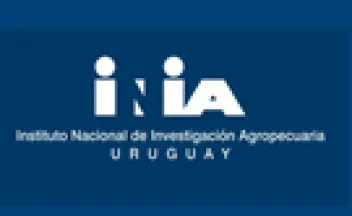Instituto Nacional de Investigación Agropecuaria
Métodos de diagnóstico genético-molecular para identificar enfermedades monogénicas en bovinos Holando.

La presencia de animales portadores de enfermedades hereditarias en bovinos Holando ocasiona diversos impactos negativos en las poblaciones de esta raza a nivel mundial y en nuestros sistemas de producción en particular, por lo que su identificación es muy importante. Este artículo se focaliza en el diagnóstico genético-molecular, como herramienta que permite identificar con precisión animales portadores de mutaciones asociadas y así mejorar la toma de decisiones en los apareamientos y en la selección de toros para programas de mejora genética y producción de semen.
A simple and inexpensive procedure to more quickly obtain new varieties in soybean.

ABSTRACT - Soybean (Glycine max L.) is one of the four most important crops in the world. The creation of new commercial varieties is a long-term activity that requires from seven to eight years from the beginning of the cross design up to registration for commercialization of cultivars. Rapid generation advance (RGA) is a technique that consists of controlling external factors that affect plant growth with the aim of shortening the sowing to harvest cycle.
Field performance of resistant potato genotypes transformed with the EFR receptor from Arabidopsis thaliana in the absence of bacterial wilt (Ralstonia solanacearum).

ABSTRACT - Bacterial wilt caused by the pathogen Ralstonia solanacearum is a devastating disease of potato crops. Harmonizing immunity to pathogens and crop yield is a balance between productive, economic, and environmental interests. In this work, the agronomic performance of two events of potato cultivar INIA Iporá expressing the Arabidopsis thaliana EFR gene (Iporá EFR 3 and Iporá EFR 12) previously selected for their high resistance to bacterial wilt was evaluated under pathogen-free conditions.
Impacto de las cianotoxinas en la producción agropecuaria y el ambiente.

La búsqueda de un compromiso entre la producción de alimento, la conservación de los ecosistemas y la disponibilidad de agua adecuada para potabilización es de una importancia relevante. A partir de resultados obtenidos en nuestro país, este artículo analiza la problemática y pone en relieve la necesidad de diseñar sistemas de producción cuyas prácticas de manejo incluyan el cuidado y preservación de los recursos hídricos.
Proyecto SMARTER. INIA ya está en el Mundial de la Genética Ovina.

Con la participación de 13 países y 27 instituciones, valiéndose de herramientas genéticas efectivas, esta iniciativa se propone mejorar la resiliencia y la eficiencia de ovinos y caprinos en sus propios ambientes y en diversos sistemas productivos. El presente artículo describe los principales desafíos del proyecto y la contribución de los equipos de INIA. El objetivo del SMARTER es estudiar cómo la genética puede ayudar a mejorar la resiliencia y la eficiencia de los pequeños rumiantes (ovinos y caprinos) en sus propios ambientes y a través de distintos sistemas productivos.
Paginación
- Página anterior
- Página 14
- Siguiente página
